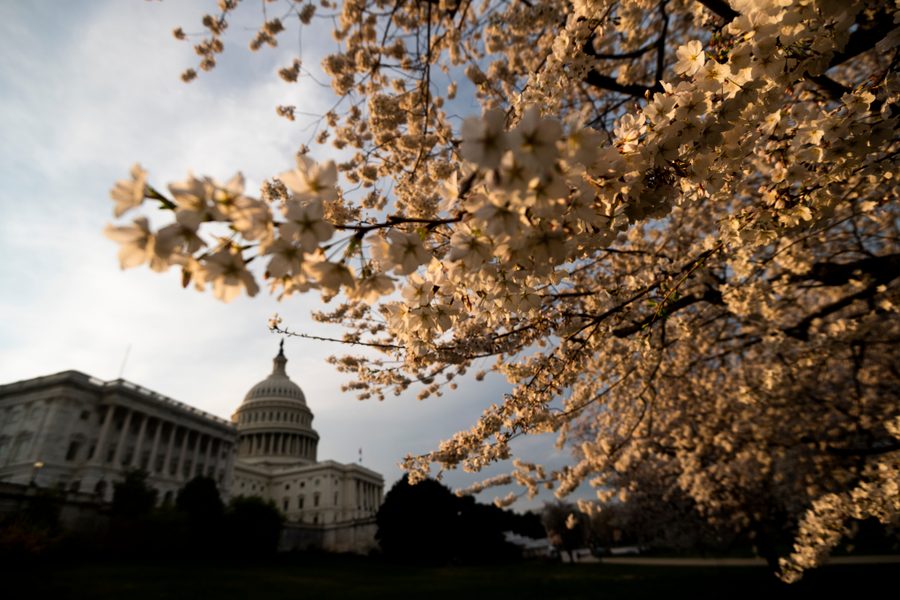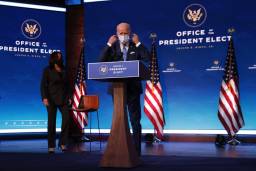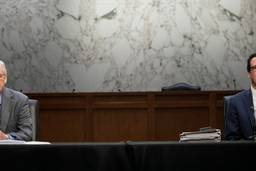We Need a Coronavirus Fiscal Stimulus That’s Bigger Than $2 Trillion. And We Need it Now.
The risk of going too small on stimulus is large, while the risk of going too big is almost nonexistent.
Josh Bivens

Congress is taking up a fiscal stabilization package this week to cushion the economic shock of the coronavirus. A natural question arising in this debate will be “how big should it be?” The experience of the Great Recession argues clearly that the answer to this has to be “as big as is needed.” This is unsatisfying but is the most important answer to this question so we don’t repeat the fiscal policy blunders of the past.
For those who absolutely need a number to focus on, the likely cost of a fiscal boost sufficient to restore economic health by the end of 2020 starts at $2.1 trillion — but it could be more, and fiscal policy should be set to deliver more if conditions warrant. And conditions continue to worsen. The expected hit to the economy would mean a job loss of almost 14 million workers by summer.
The importance of making fiscal aid conditions-based is illustrated by our response to the Great Recession in 2008 and 2009. In 2009, the American Recovery and Reinvestment Act (ARRA) allocated roughly $800 billion over two years for fiscal stimulus. It turned out to be substantially underpowered relative to the private-sector shock to demand.
Most notably, ARRA ran out far before private-sector demand was healthy enough to generate acceptable levels of unemployment. We should not make the same mistake this time — fiscal aid needs to be ongoing so long as the economy remains weak. This is especially true given the radical uncertainty surrounding the current crisis, where a return to economic normalcy will begin only when public health measures allow it.
We can, however, put a lower-bound estimate on the size of aid needed to restore economic health by the end of 2020 (an ambitious but totally realistic goal). Today, Goldman Sachs’ forecasting group released projections of growth in U.S. gross domestic product (GDP) for the rest of the year. Their forecasts were pessimistic in the short run — a 6% GDP contraction in the first quarter and a 24% contraction in the second quarter. But even as of a few days ago a number of investment banks were forecasting second-quarter contractions of greater than 10%, and the pattern has been that these estimates grow every day. In short, we should take these types of forecasts very seriously.
In the third and fourth quarters, Goldman Sachs projects growth of 12% and 10%, respectively, as the economy bounces back from the coronavirus shock. Given that the economy’s trend growth before the crisis was around 1.9%, GDP at the end of 2020 will still be 4.9% smaller than it would have been absent the coronavirus shock. Filling this demand gap with fiscal stimulus implies we would need roughly $1.1 trillion.
The enormous contraction in the first half of the year projected by most forecasters is consistent with job loss of almost 14 million workers by June. While much of this job loss would be recouped if the rapid projected growth in the third and fourth quarters comes to pass, we should not be complacent about this.
The rapid return to growth projected in Q3 and Q4 is itself driven by assumptions that fiscal stimulus passes. For example, Goldman Sachs (and other banks like JPMorgan Chase) assume a $1 trillion package will pass this coming week or the next. So, the $1.1 trillion stimulus must happen on top of this underlying assumption in order to deliver a healthy economy by the end of the year. Therefore, a fiscal rescue package that makes the economy whole by the end of 2020 would require $2.1 trillion. But, again, the real number needed could be more, and fiscal policy should be conditions-based and deliver more if targets aren’t met.
Is it possible that the economy could remain weak even with that much stimulus? Absolutely. For one, this number assumes the fiscal stimulus is well-targeted and not squandered on unconditional giveaways to business. But the majority of the Trump administration plan for $1 trillion includes such unconditional giveaways. A Trump administration slush fund will not spur the needed growth.
But even well-targeted stimulus could end up being underpowered. The optimistic scenario for coming months is that a fast, large, and well-targeted fiscal response combines with progress on public health interventions (testing, testing, testing) to allow the economy to start growing rapidly starting in July. If many workers laid off in the previous three months have received federal support and businesses have been given loans and other aid to get through this quarter, then many labor market matches that existed at the beginning of March can be reestablished. Shuttered restaurants, for instance, can open back up and be largely staffed with the same people who were staffing them in February.
But the longer workers and businesses have to go without aid and search desperately for other economic coping strategies, the harder it will be to reestablish these matches, and the longer recovery will sputter. Fiscal aid should continue until the job of reaching full employment is done.
Finally, we should note that the risks of doing too much versus doing too little are extremely asymmetric. Traditionally, the risks of overshooting on stimulus is that policymakers might spark inflation or spike interest rates. But both inflation and interest rates were extraordinarily low even before the coronavirus shock when unemployment rates were historically low. The risks of spiking this seems very remote, and the downsides to temporarily causing them to rise faster than expected are extremely mild. The risk of doing too little fiscal stimulus are huge — potentially years of elevated joblessness and economic suffering.
As Congress and the administration debate the fiscal stabilization package in coming days, $2.1 trillion by the end of 2020 is the scale they should be thinking on, unless subsequent economic forecasts deteriorate even more. Further, aid must be set to automatically continue if the economy remains weak as 2021 starts. We need to start learning from our mistakes from the past.
This post first appeared at the Economic Policy Institute.






